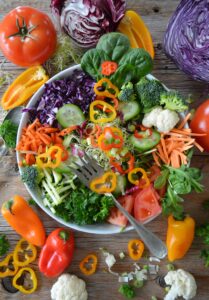Using Fresh or Frozen Fruit in a Smoothie
Yes, there are some differences between fresh and frozen fruits nutritionally, although they are often minor. Both fresh and frozen fruits can be excellent choices for smoothies, but there are a few factors to consider:
Nutrient Content: Fresh fruits are picked at peak ripeness, ensuring they are high in nutrients. However, they can lose some of their nutritional value during transportation and storage. Frozen fruits, on the other hand, are typically picked at peak ripeness and frozen immediately, which can help preserve their vitamins and minerals. The nutrient loss in freezing is minimal.
Availability and Seasonality: Frozen fruits allow you to enjoy off-season fruits all year round, ensuring a wide variety of nutrients regardless of the season. Fresh fruits are best consumed during their natural growing season for optimal taste and nutritional value.
Convenience and Shelf Life: Frozen fruits have a longer shelf life and can be more convenient, as they are pre-washed and often pre-cut. This makes them a practical choice for quick smoothie preparation.
Texture and Flavor: The texture of frozen fruits can be different from fresh fruits in smoothies. Frozen fruits can make your smoothie thicker and colder, which might be desirable for some people. However, the flavor of some fruits can diminish slightly when frozen.
Added Ingredients: Be cautious with frozen fruits that may have added sugars or syrups. Always opt for fruits frozen in their natural form without any added ingredients to ensure you’re not consuming unnecessary added sugars.
Cost and Accessibility: Frozen fruits are often more cost-effective, especially when purchasing fruits that are out of season. They are also readily available in most supermarkets.
In summary, both fresh and frozen fruits are nutritious choices for smoothies. The decision between fresh and frozen can depend on factors like availability, convenience, cost, and personal preference for texture and taste. For most purposes in smoothie-making, they can be used interchangeably without significantly altering the nutritional value of your smoothie.
Organic Argument
Difference between organically grown and conventionally grown organic fruits and vegetables used in a smoothie
There are differences between organically grown and conventionally (non-organically) grown fruits and vegetables, which can influence your choice when using them in smoothies. Here are the key distinctions:
Pesticide Use: Organic farming typically uses natural pesticides and fertilizers, whereas conventional farming often uses synthetic pesticides and fertilizers. Organically grown produce generally has lower levels of pesticide residues.
Nutritional Content: The debate about whether organic produce is more nutritious than conventional produce is ongoing. Some studies suggest that organic fruits and vegetables may have slightly higher levels of certain nutrients, such as antioxidants, while others find no significant difference. The variation in nutrient content can also be influenced by factors like soil quality, weather conditions, and when the produce is harvested.
Taste: Some people report a taste difference between organic and conventionally grown produce, although this is subjective and can vary widely. The taste can also be influenced by the freshness and ripeness of the produce.
Environmental Impact: Organic farming practices are generally considered to be more environmentally friendly. They tend to be more sustainable, with less impact on the soil and a reduced level of pollution from runoff.
Cost and Accessibility: Organic fruits and vegetables are usually more expensive than their conventional counterparts, mainly due to more labor-intensive farming practices and often lower yields. They may also be less available in certain areas.
Health Concerns: While washing and peeling can reduce pesticide residues on conventionally grown produce, some consumers prefer organic produce to minimize their overall exposure to these chemicals.
Regulation and Labeling: Organic produce is regulated in many countries, meaning it must meet specific standards to be labeled as organic. This is not the case for conventionally grown produce.
In terms of using them in smoothies, both organic and conventionally grown fruits and vegetables can be nutritious choices. The decision to choose one over the other often comes down to personal preferences, budget, and concerns about pesticide exposure and environmental impact. Washing and peeling non-organic produce can reduce pesticide residues, making them safer for consumption. However, if minimizing exposure to synthetic pesticides and supporting environmentally sustainable farming practices are important to you, then choosing organic produce might be the better option.











